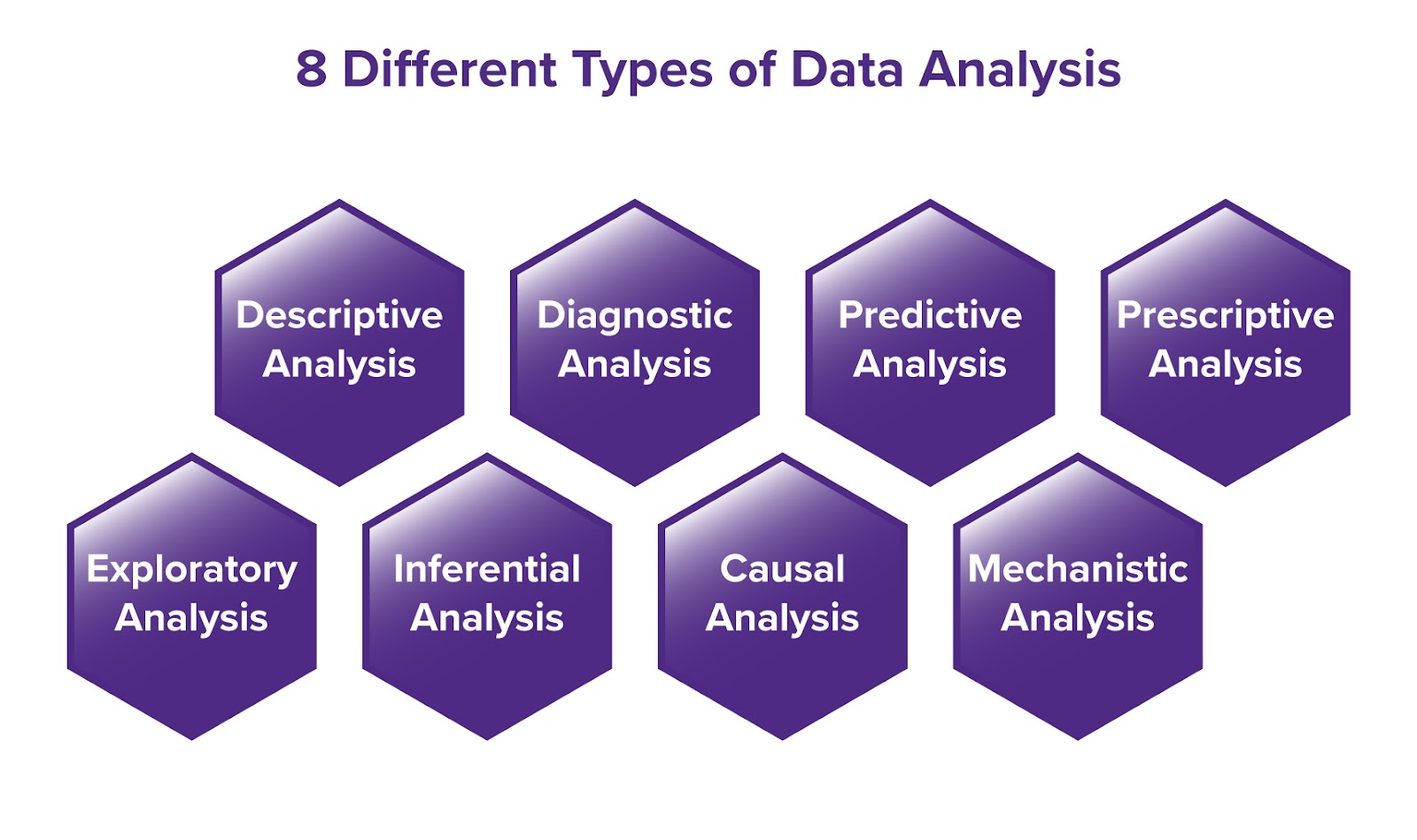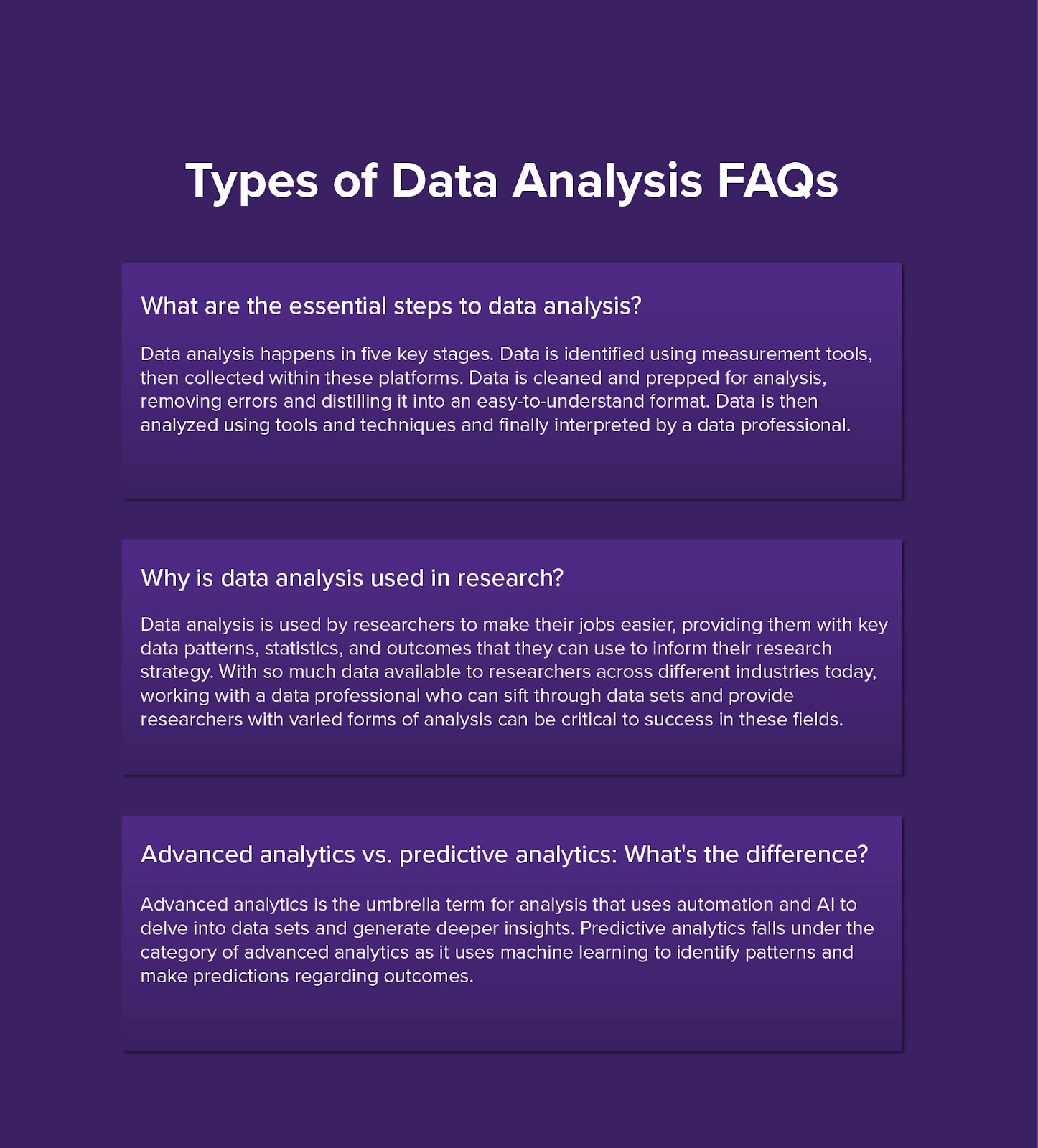If you’re interested in pursuing a career in data science, gaining a deeper understanding of how to distill data down using different methods is key; data analysis is fundamental to just about any business and industry. Companies rely on the data they collect to inform future business decisions, so understanding different types of data analysis and how they work in tandem is a fundamental skill set in any data professional’s toolbox.
In this article, we will discuss eight key types of data analysis that are prevalent across the data science industry. If you’re pursuing work in an industry where data is critical to the company’s success, or want to enter a new field in competitive arenas like government, healthcare, or media, having a working knowledge of these core data analysis techniques will help give you an edge.
Are you currently working as a data professional, but want to advance your career by acquiring new skills within data analysis? Do you want to branch out into a different type of data analysis altogether, like working with data that uncovers social or consumer needs? Understanding how to use the below eight types of data analysis will give you an advantage within the field.
Organizations across a variety of industries rely on data analysts in order to identify trends and patterns, uncover insights, and drive business decisions; and the individuals responsible for collecting, sorting, and analyzing that data will continue to be in-demand as more data is created each day. From Netflix’s recommendation system driven by user data, to data-enabled technologies that help restaurants manage their inventory, to medical systems used to track public health issues, there is no shortage of ways aspiring data analysts can apply their knowledge in today’s workforce.
Having a strong understanding of data analysis techniques doesn’t necessarily mean enrolling in a more formal higher education program. Enrolling in a data science boot camp can get you up to speed on the methods of data analysis used by professionals to solve a variety of real-world business problems in just 24 weeks. Northwestern Data Science and Visualization Boot Camp gives individuals a deeper understanding of how different types of data analysis are used by professionals in the industry.
 Live Chat
Live Chat


